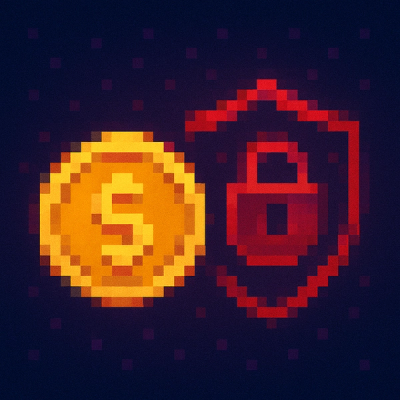
Security News
The Changelog Podcast: Practical Steps to Stay Safe on npm
Learn the essential steps every developer should take to stay secure on npm and reduce exposure to supply chain attacks.
Parallaxer is a module that allows you to position elements on your page to provide a parallax effect as you are scrolling.
Parallaxer works by passing in an array of element configs into the primary parallaxer function. These individual configs take in DOM elements and other parameters to position your parallax elements.
Usage sections:
npm install parallaxer --save
ES6
import parallaxer from 'parallaxer';
or CommonJs
var parallaxer = require('parallaxer');
At a minimum, parallaxer takes in an array of elements configs. These configs simply need a dom element.
var myParallaxElement1 = document.getElementById('my-parallax-element1');
var myParallaxElement2 = document.getElementById('my-parallax-element2');
parallaxer([{
element: myParallaxElement1
}, {
element: myParallaxElement2
}]);
Now these dom elements will scroll in a fixed position.
What is the point of parallax-ing elements if they appear at the same position! By default, each element has a distance of '1' which means that it appears to be at the same distance as every other element on the page. By multiplying our distance, we can make our elements appear farther away. By decreasing our distance, we can make our elements appear closer.
var myParallaxElement1 = document.getElementById('my-parallax-element1');
var myParallaxElement2 = document.getElementById('my-parallax-element2');
parallaxer([{
element: myParallaxElement1,
distance: 2
}, {
element: myParallaxElement2,
distance: 3
}]);
We often don't want our elements to appear on the page right away and we would rather gives them some distance from the top of the page. We can easily do this by providing an offset to push the element down from the top of the page.
var myParallaxElement1 = document.getElementById('my-parallax-element1');
var myParallaxElement2 = document.getElementById('my-parallax-element2');
parallaxer([{
element: myParallaxElement1,
distance: 2,
offset: 100 // Will now initially show up 100px from the top of the page
}, {
element: myParallaxElement2,
distance: 3,
offset: 500 // Will now initially show up 500px from the top of the page
}]);
One common feature of parallax sites is that once an element appears in the viewport and then hits the top of the viewport, it "sticks" to the top and remains fixed. Parallaxer can easily doing this by setting "stick" to true in the element config. If "stick" is set to true, by default it will stick to the top of the page. If you want it to stick down a little farther, you can provide "stickOffset" to position it a little farther down the page.
var myParallaxElement1 = document.getElementById('my-parallax-element1');
var myParallaxElement2 = document.getElementById('my-parallax-element2');
parallaxer([{
element: myParallaxElement1,
distance: 2,
offset: 100,
stick: true // Will now stick to the top of the page instead of leaving the viewport
}, {
element: myParallaxElement2,
distance: 3,
offset: 500,
stick: true,
stickOffset: 100 // Will now stick 100px down from the top of the page instead of exiting the viewport
}]);
Another key feature of parallax sites is that many elements often fade in when entering the viewport. Parallaxer can do this by adding in an 'onReveal' function that allows you to take some action when your element enters the viewport.
var myParallaxElement1 = document.getElementById('my-parallax-element1');
var myParallaxElement2 = document.getElementById('my-parallax-element2');
parallaxer([{
element: myParallaxElement1,
distance: 2,
offset: 100,
stick: true,
onReveal: function() {
// Can add a class to the parallax element to easily fade or transition it in
myParallaxElement1.classList.add('reveal');
}
}, {
element: myParallaxElement2,
distance: 3,
offset: 500,
stick: true,
stickOffset: 100,
}]);
Parallaxer provides scroll listeners to update element positions. When calling the parallaxer function, it returns a "cleanup" function that you can use to clear any event listeners to prevent memory leaks. This is primarily useful when using parallaxer with Front-End frameworks like React where the page is not refreshed.
var myParallaxElement1 = document.getElementById('my-parallax-element1');
var myParallaxElement2 = document.getElementById('my-parallax-element2');
var cleanupParallaxer = parallaxer([{
element: myParallaxElement1,
distance: 2,
offset: 100,
stick: true,
onReveal: function() {
// Can add a class to the parallax element to easily fade or transition it in
myParallaxElement1.classList.add('reveal');
}
}, {
element: myParallaxElement2,
distance: 3,
offset: 500,
stick: true,
stickOffset: 100,
}]);
// ... Page transitions
cleanupParallaxer();
Released under the MIT License
1.0.0
FAQs
A library to add a parallax effect when scrolling
We found that parallaxer demonstrated a not healthy version release cadence and project activity because the last version was released a year ago. It has 1 open source maintainer collaborating on the project.
Did you know?

Socket for GitHub automatically highlights issues in each pull request and monitors the health of all your open source dependencies. Discover the contents of your packages and block harmful activity before you install or update your dependencies.

Security News
Learn the essential steps every developer should take to stay secure on npm and reduce exposure to supply chain attacks.

Security News
Experts push back on new claims about AI-driven ransomware, warning that hype and sponsored research are distorting how the threat is understood.

Security News
Ruby's creator Matz assumes control of RubyGems and Bundler repositories while former maintainers agree to step back and transfer all rights to end the dispute.